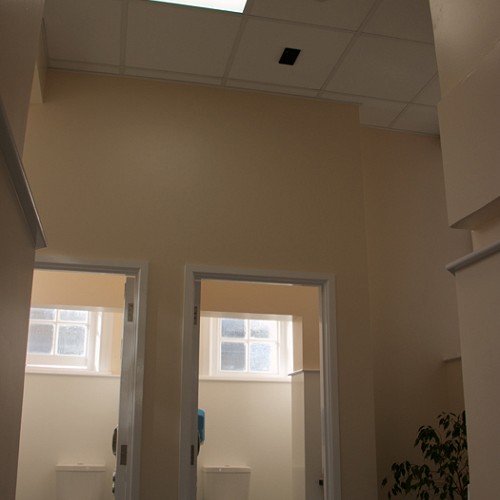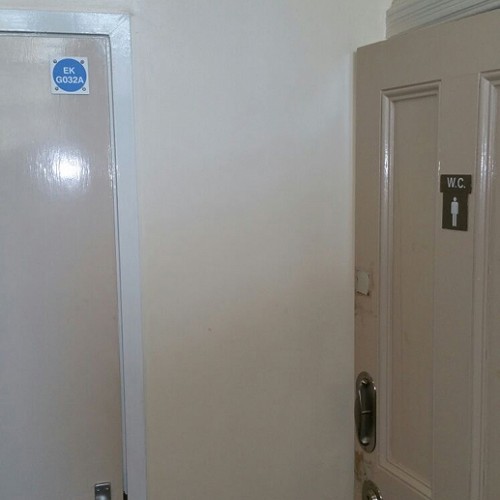NHS Hospital Toilet Refurbishment
For this project we undertook a refurbishment of a toilet room in an NHS Hospital. The existing fittings and fixtures were to be removed and the the whole room renovated to modern standards. We removed the old toilets, sinks and striped back the flooring and stud walls prior to installation of new facilities and pipework. The room was finished with new clinical wall cladding and flooring.
Our Completed Work
How it looked before
The Services We Provided
- To strip out old toilets, flooring, block and stud walls and all redundant services
- Alter bathroom layout to new design drawing, creating two separate cubicles within individual sink facilities and updated services.
- Remove and treat old sand and cement internal render damage to walls, install damp proofing protection before installing timber battening to uneven walls and plasterboarding
- Alter electrics and lighting to suit new layout, including LED and emergency lighting facility.
- Alter heating and plumbing pipework on old cast single pipework heating system and cast waste soil outlets.
- Install new suspended ceiling grid with LED lighting
- Install new sanitaryware, fans and clinical wall cladding (Altro Whiterock)
- Supply and lay new vinyl safety flooring with cover skirting details
- Redecorate walls, woodwork and cast radiators.
- Deep Clean and remove temporary working compound and hoardings.
- Issue relevant Compliance documentation including O&M, Electrical certification.
- Client: National Health Services
- Duration: 4 weeks
- Project Works: General Building, Carpentry, Damp-proofing, metal and timber partitions, suspended ceilings, Bathroom sanitaryware, Heating and plumbing alterations, Electrical, Flooring, Whiterocking and Decorating.
Projection Complications/Restrictions:
- Damp issue due to building age 1800’s, as a resulted added damp-proofing measures were installed including DPM membrane to studwork, floor latex and walls.
- Obsolete electrical cabling (mineral)
- Lack of water and heating isolation points, therefore freezing of pipework and large areas of shutdowns had to occur before additional isolations could be put in as part of the works to minimise further shutdowns being required.










